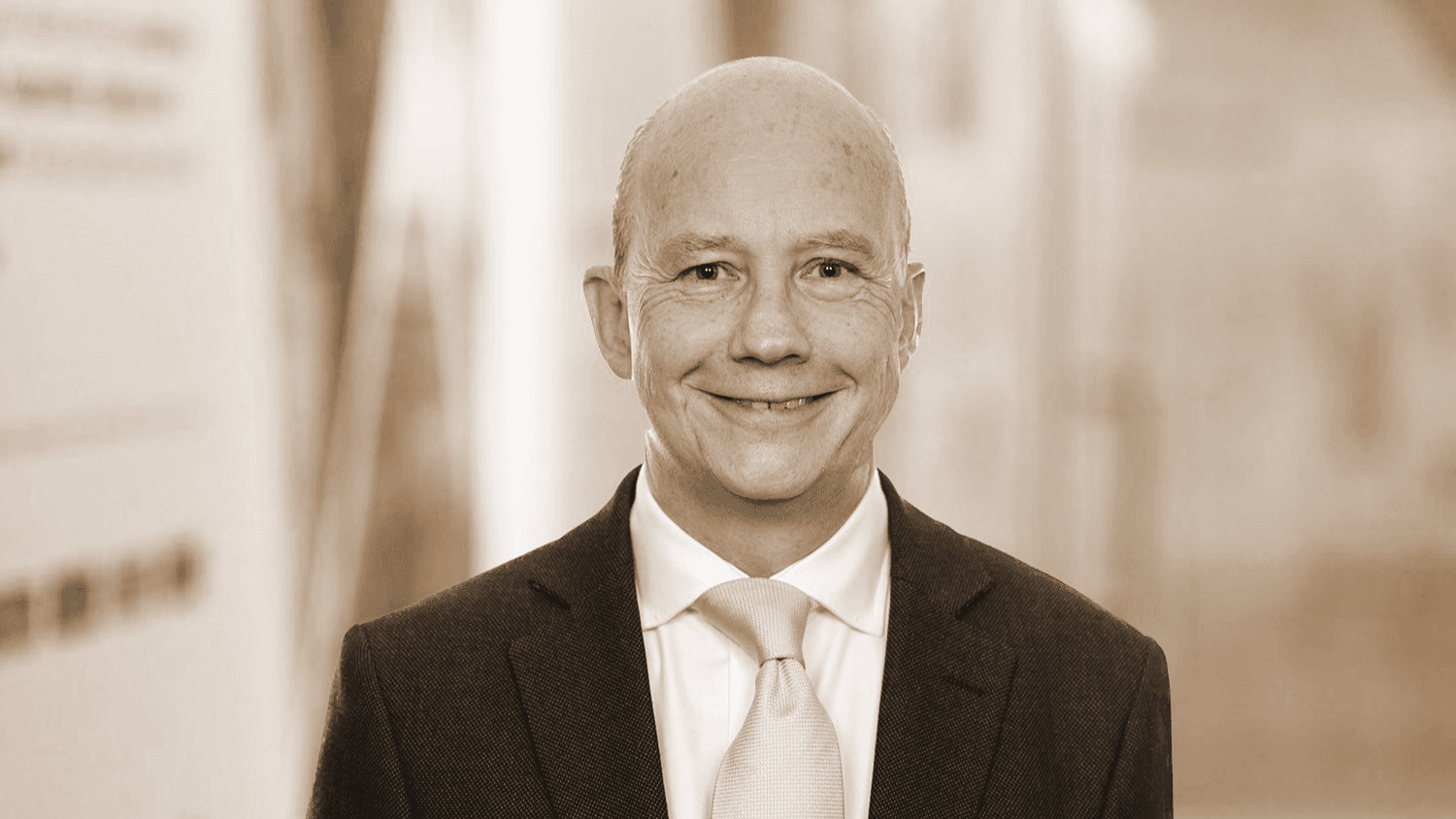“Looking at things from a distribution perspective, I know that I cannot control financial markets, I cannot control client sentiment and, sitting in the chair that I do, I cannot control performance” observes Premier Miton Investors’ Jonathan Willcocks. “What I can do, however, is control how we as a business engage with our clients and the level of service we offer them.
“Everything we do as an asset manager has to be to the benefit of the end-customer – to aim to meet their long-term dreams, aspirations and liabilities. Ultimately, then, it is not about trying to encourage a specific intermediary to buy one of your funds – it means thinking about, What investing capabilities do we have that can help the end-customer achieve their aims?
“For me, then, any relationship between asset manager, intermediary and end-customer has to be a symbiotic one, which is why we do so much in the retail space. To offer you one example, when our CIO Neil Birrell does market updates, he uses plain language any end-customer should understand – because an integral part of what we do has to be to remove the jargon from this industry and make it more accessible.”
Willcocks took over as global head of distribution at Premier Miton in September 2022, having performed the same role for five of the 17 years he was a fixture at M&G – where he was also global head of retail sales for a decade. For him, the key to successful client relationships is transparency, of which that accessibility is a crucial part. “If you think about it, most of our flows come from the intermediated world,” he explains.
“One of the things we pride ourselves on is that our fund managers are very accessible – and, in the same vein, you absolutely have to be transparent. Explain what you do and be there in both the good times and the bad. The thing is, when markets do go bad, you will see many people putting their heads below the parapet to try and avoid the arrows heading their way.
“Yet that is the point you need to be out there explaining to intermediaries exactly what is and what is not working. I have been through this in so many cycles in my own career – and it inevitably works. The bad times are when you build up trust the most so, when the markets turn, the clients will remember you and they will pick up the phone to you first.” (Main article continues after box)
“If you invest in it wisely, your brand can create such a positive bow-wave in front of the business that it facilitates conversations for your sales people, for your marketing and PR people and, of course, for advisers recommending your funds and solutions to clients.
Rapid response
Who or what has been the most important influence on your career?
I have picked two people. One – at the risk of being controversial these days – is Winston Churchill and the other is David Shaw, who I worked with at Hambros over 30 years ago before he became an economist and a strategist for Legal & General. What I learned from both – albeit only one in person – was the power of the spoken word and good communication: how you can motivate people to do things by the way you say things. As people who know me will agree, I am not the tallest person in the world so, when I find myself on a big stage, I know I have to occupy a bigger space. This is a people business – and, if you project your message in an enthusiastic way, there is a much greater chance of people remembering what you said.
If you were not in investment, what job do you think you would you be doing now?
Easy – a medical officer in the Royal Air Force.
What excites you about the current investment outlook? What worries you?
What worries me is the headlong rush into passive by people making a decision based on cost alone and not on outcome. As for what excites me, it is the way human ingenuity, imagination and ability will always create opportunities for companies and investors to make money.
If you were head of the FCA for a day, what would be your priority?
There are two big questions to address. First, how do you make the UK a competitive marketplace where people want to come and work and set up businesses? Second, how do you make UK listed capital markets more attractive for investments?
How can asset managers best attract the next generation of talent?
As an industry, we have to demystify and not be so grey and full of jargon. How often do we struggle to explain what we do to friends who don’t work in asset management? We have to raise the sector’s profile because what we do touches everybody’s lives. Everybody’s pension pot is being managed by somebody in asset management – and when you see people protesting against some big company or other, they likely have no idea they could own them in their pension fund. We need to address that lack of understanding – that disconnect.
What advice would you have given your younger self on your first day in this business?
‘You never stop learning so don’t ever stop reading.’
For Willcocks, that visibility and transparency extends to being very clear about what a particular fund can and cannot do – and then holding to that. “Clients need to know the sorts of environments in which a fund should perform well and the ones in which they are not going to do so well,” he says. “At the risk of mixing my metaphors, that means sticking to your knitting and not changing your spots.
“A value manager performing poorly in a growth market is OK – what you do not want is a value manager performing poorly when value is doing well, or performing really well in a growth market – that means they are not doing what they should be. What really worries me – though it is not applicable to where I am today – is when a manager changes their style to chase performance. That is when you really break the trust.”
Key assets
The result of the 2019 merger of Premier Asset Management and Miton Group, the AIM-listed Premier Miton expanded further this time last year with the acquisition of equities boutique Tellworth Investments. So what is the Willcocks take on the mergers, acquisitions and consolidations taking place across the asset management sector as a whole? “As you say, we have been involved in a couple of those,” he nods.
“Thinking about it more broadly though, what does not work, is when two weak asset managers bolt themselves together because they have high costs and big redemptions. That does not fix the ultimate issue as the redemptions tend to continue while your second potential problem is your key assets – the people, the fund managers who run the money – start walking out the door.
“Whatever else you do, then, you have to make sure the people coming into the organisation can work with the people already there. M&A is disruptive, in and of itself, but you need to create a collaborative, cohesive culture as well making sure you solve for, Does the investment platform make sense? Can we gain some operational efficiencies out of it? And, of course, does it make sense for our end-customers?
“Finally, you need to be careful the advisers and wealth managers you work do not become doubled up on certain funds across the combined organisation and you actually force them to reduce their exposure to you. One of the things we consider is, If we are going to do M&A, what is additive? Does it bring more scalability to an existing strategy? Does it, for example, give access to new markets or new investment capabilities?
“Take the deal our CEO Mike O’Shea oversaw in 2019: Premier was well-known in the UK advisory space, with a great multi-manager and multi-asset business and one or two UK funds and other funds; and Miton was well-known for managers like Gervais Williams in UK equities, Hugh Grieves in US equities, Carlos Moreno in European equities and David Jane, who used to work with me at M&G, doing macro-thematic investing.
“So the two product line-ups were incredibly complementary – plus Miton predominantly sold to the wealth manager space and Premier serviced the adviser space. So when you brought the two businesses together, it was very additive, with not much overlap, and that made sense. Similarly, with the Tellworth acquisition we made at the start of 2024, it was a great business that brought further small-cap capability into the organisation.
“Yes, we already had some but Tellworth also offers a long/short absolute return fund, which Premier Miton did not have. So it brings new investment capability – and, of course, new strategies help open up access to new client types, such as hedge fund of funds or family offices. With M&A, then you need to be asking: Does the culture fit? Do the people fit? Is it additive? Is it accretive? And does it complement what you already have?”
Culture and success
That is the second time Willcocks has mentioned business culture so how would he define that in the context of asset management? “The output of culture is you want people who are happy working for you in the firm – who are happy to work for their colleagues and for the ultimate common goal, which is looking to generate long-term wealth creation for our investors, whether it is capital, income, both or whatever.
“It comes down to what makes a successful asset manager – and that is having a team of people who are happy at what they do because then they will go the extra mile to do the right thing for clients. And if you do the right thing for clients and you create the right outcome for clients, then you end up raising more assets to manage well for those clients – and then the P&L takes care of itself. Culture and success – one leads to the other.
“And I really do believe people like coming to work at Premier – and that is because we always say we give the fund managers ‘the freedom to deploy their edge’. They can come here and be left alone to build their own funds and strategies whereas, quite often, if you work for a larger firm – and this again comes back to culture – you can find yourself getting dragged into all the other bits and pieces a larger firm pulls you into.
“Here, the fund managers’ job is to run the money, deliver returns and go and meet clients and intermediaries on the road – and the rest of us run the business. We also have all the fund managers on one floor whereas, again, in bigger shops – and I have worked for bigger shops – you end up having equities and fixed income and private markets and multi-asset on different floors and then you don’t get that sharing of ideas and information.” (Main article continues after box)
Liquid goal
The acquisition of Tellworth in January last year added a new string to the Premier Miton bow in the shape of a long/short absolute return fund. To what degree, then, does Jonathan Willcocks believe investors – and, by extension, wealth and asset managers – need to be thinking beyond equity and bond investments and more towards alternatives and private markets?
“We went through a period of time when private markets became incredibly popular – not because they were private markets per se but because they had two attributes,” he begins. “First, they were generating reasonably good internal rates of return, because the cost of debt was much lower. Second, in certain segments of the private market space, you were generating high single-digit, if not double-digit, income.
“And when cash rates were near-zero, dividend yields were down at 2% or 3% and credit spreads were very tight and priced off a very low risk-free rate, people were going, OK, the price of illiquidity actually gives me the long-term benefit of a higher yield. Everything has since repriced, however, and fixed income markets are now very investable again so the need to rush headlong into private markets is perhaps not so strong today.”
Willcocks is now more interested in the role alternatives – particularly the liquid kind – can play in portfolios. “You are now generating different sets of returns but without that same market-beta exposure,” he explains. “Again, when you had near- zero interest rates, alternatives were very attractive but, after rates pushed up to 5%, investors questioned the need to buy liquid alternatives at 6% or 7%, given the added volatility.
“Now, however, if you can get 7% or 8%, that starts to look attractive relative to 4%, dropping to 3%, for cash. I don’t know about you but, these days, I seem to be getting emails from banks or National Savings every other week saying their rates are dropping to 4.2%, 4%, 3.8%, 3.75%. I don’t know what the bite point is but we are definitely seeing a pick-up in interest in absolute return and liquid alts, just because cash rates are dropping.”
What about brand – does that matter in asset management? “I think it does,” says Willcocks. “It was Jeff Bezos who said ‘Your brand is what people say about you when you’re not in the room’. And, in asset management, your brand needs to encompass a sense of trust and dependability – a sense that ‘you are a firm that I know and I know well’.
“Your brand also needs to address the question of, What is your purpose? Then, if you invest in it wisely, your brand can create such a positive bow-wave in front of the business that it facilitates conversations. It facilitates the conversations your sales people have, the conversations your marketing and PR people – and, of course, the conversations advisers recommending your funds and solutions have with their own clients.”
While we are in this area, are initiatives such as Consumer Duty and value for money still front-of-mind for asset managers. “Absolutely,” says Willcocks. “You can get tied up in knots with prescriptive rules whereas, as a principles-oriented piece of regulation, Consumer Duty gives us the base to do the right thing for the customer, if you embed it deep and wide in your organisation – and we have.
“That means, from the moment you wake up in the morning, every decision you make as an business stems from, Is this leading to a better consumer outcome? And, Are we avoiding foreseeable harm? So Consumer Duty has brought a really positive perspective to the industry – and delivering value for money is all part of that. And I am not saying this because I am sitting in front of you – I am saying it because I genuinely believe it!”
Backing UK plc
At the risk of puncturing such positivity, does Willcocks have any concerns about the future of investment in the UK? “My biggest worry is the decline of interest in UK listed capital markets,” he replies. “At Premier Miton, we were very vocal about the idea of a GB ISA as a way of encouraging people to invest in UK plc. Back in the day, of course, when ISAs were first PEPs, so to speak, you could only invest in UK-listed companies.
“Now, people want to be able to invest their ISAs wherever they want in the world – and I absolutely take the point. Still, if you are giving people a tax break to invest their money, why wouldn’t you encourage that tax break to be used to invest back into UK companies? That would seem to make sense – and there are lots of other countries and markets around the world where they encourage domestic investment through a tax break.
“Obviously, you see companies looking at the higher multiples to be had across the Atlantic and, of course, the current situation is linked to the UK’s reduced weighting in world indices. When I first started in this business, the UK was 12% or 13% and now it is 3% or 4% – and wealth managers and pension funds have all readjusted their exposure accordingly. Now, that really started declining from 1997 – and what happened in 1997?
“The abolition of dividend tax credits for pension funds – and that, exacerbated by liability-driven investment, has just collapsed the amount of money allocated to the UK. And I absolutely recognise pension fund trustees have a fiduciary responsibility to generate the best outcome for their policy and pension fund holders – but wouldn’t it be nice if we could incentivise UK investors to direct more of their money towards the UK?
“Could we look at the reintroduction of dividend tax credits for pension funds, for example? Or at a form of savings product that encourage investment in the UK for the tax credit? Or even get rid of stamp duty? I understand it is challenging for a government trying to raise money but, if you think about dividend tax credits, say, the cost implications today are a lot smaller than the benefits gained 25-odd years ago.”
Last question, then – what sort businesses does Willcocks see emerging as the winners and losers of UK asset management over the coming years? “Large firms, by sheer volume, can participate in every part of the market – so passive, active, private assets, alternatives, whatever,” he replies. “As such, big, conglomerate-type asset managers will probably succeed.
“At the other end of the scale, if you are a boutique – which can be anything up to £50bn or £60bn in assets these days – then, if you have a clearly differentiated proposition, where people know what you deliver for your clients, you can be very successful. If you are maybe a business with £200bn to £400bn in assets, however, that middle ground of asset management feels like a more challenging place to be.
“You probably have a cost base that has built up – can you reprice it? You have lots of products – which ones do you focus on? Which ones do you not focus on? And it can be much harder to reinvent yourself in that space – because it is just where you have grown to. Ultimately, if people think warmly about your brand and you are very clear about what you will and will not do, then I think you can be successful. Few businesses can be all things to all people in every single market, however, so you need to be absolutely clear about your proposition.”
Alive and kicking
The huge rise in passive investments over the last decade has unquestionably made the job of active asset managers harder, believes Jonathan Willcocks – but the key now for businesses is how they respond to that challenge. “We need to think hard about the drivers behind the use of passive,” he says. “Clearly, cost is one – and yet passive is not a panacea for every investor’s needs.
“Over the long term, I would argue, a decision even to invest in passive funds has an active element to it. At the risk of sounding glib, the problem with passive is that, in the world of fixed income, you are buying the biggest debtors, which may or may not be a good thing; and, in the world of equity, you are buying the biggest companies, which – even if they were fast-growing once – are unlikely to be the fastest growers any more.
“I may be borrowing somebody else’s line here but index investing is a pretty Marxist form of capitalism because you are effectively allocating to the biggest, not necessarily the best, choices. But, of course, most companies started at the small end somewhere and, while the mid and small-cap parts of the market base have been largely abandoned over the last five years or so, they still tend to be the fastest growers.
“So, while index investing may expose you to market forces, it does not bring the ability to differentiate – and I would argue that, if you blindly allocate capital to the largest companies or the largest debtors, you are not actually doing any proper due-diligence and, because there is no differentiation, what you end up with is a market that ultimately does not work.
“What are the numbers here? In equities, very roughly, 40% to 50% of assets are now in passive. In fixed income, that number is nearer 20%. In multi-asset, it is lower still and, in private markets and alternatives, it is very low. So there is plenty of space for active asset managers to operate in – a good example being our own US Opportunities fund, which is attracting flows on the back of its zero exposure to ‘Mag Seven’ stocks.
“That decision stems from the manager’s concerns about long-term valuations and whether the whole ‘Mag Seven’ idea, and indeed AI, has become overhyped. It does not mean he will not own any of these stocks in the future – just not right now – and, as a result, the fund is being seen as a diversifier away from, say, the S&P500 index, some 30% of which are the Mag Seven stocks.
“So there is plenty of room for active to sit alongside passive and the way I would frame it is, 10 years ago, active was core and passive was a very small part of people’s portfolios – the trading bit. That has now inverted so passive is increasingly core and active has become a bit more satellite. So, if you are going to do active, there is no point looking like the benchmark – you need to look different to have a purpose in life.
“And that is essentially how we are thinking about this at Premier Miton – do something different so people look at you and go, Right, I have my passive here and now I want something really interesting or more exciting or differentiated over here in the active space. So that is a long way of saying the narrative may change as to its purpose but active is very much alive and kicking.”










